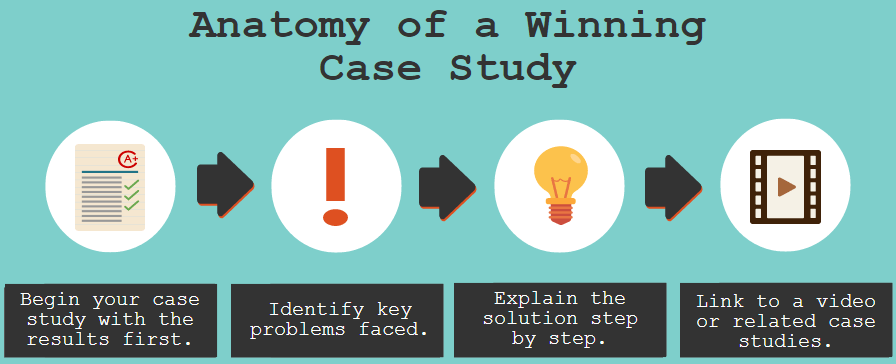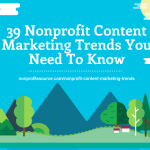8 Research-Backed Ways To Improve Marketing For Nonprofits

Marketing can feel like an uphill battle.
The constant pressure to create engaging content to reach members can test even the most seasoned of professionals.
But, the truth is marketing for nonprofits doesn’t have to be an insurmountable challenge.
Even the most resource-strapped organizations can realize huge revenue growth opportunities with minor tweaks to their content marketing process.
In this post, you’ll learn 8 research-backed ways that are proven to improve the reach and impact of your content.
1. Understand how search engines view content
Search engines are becoming more sophisticated by the day.
5 years ago, marketers could post 500-word articles to rank #1 for the most competitive keywords.
But, times have changed and Google is increasingly rewarding sites that provide relevant and useful answers to user searches.
Back in 2011, Google Panda was released with one purpose in mind. Penalize spammy low-value posts.
What was the result?
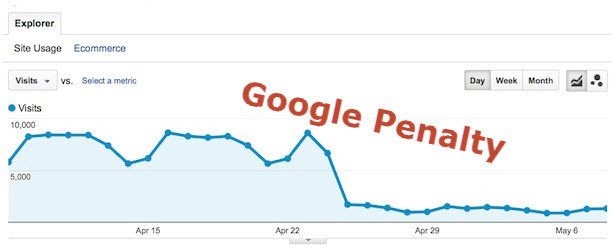
These sites plummeted in search rankings losing valuable traffic to their website.
Just take a look at Google’s mission statement, it says it all:
“Google’s mission is to organize the world’s information and make it universally accessible and useful.” – Google
Today, the cornerstone of nonprofit content marketing focuses on creating value for your readers.
And this is exceptionally difficult to do in 500 words.
In fact, a study conducted by SerpIQ found that content written between 2000 and 2500 words dominates search results.
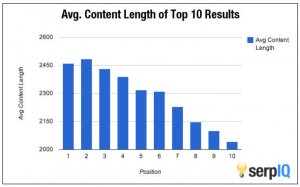
One of my articles on nonprofit marketing mistakes is a good example of this:
- It is 2218 words in length
- Ranks well for competitive keywords
- Drives an insane amount of traffic to my site
- Has over 200 social media shares
- Generates tons of email subscribers
That’s just after the first week of promoting the article online.
What made this article so successful?
Here’s a hint, it wasn’t the length of the content.

Sign Up For Free Marketing Tips
Do you use digital to grow awareness to your mission? Sign up and get the latest posts on digital marketing for nonprofits.
Instead, it was because the article provided actionable tips while diving deep into the subject matter.
Believe me when I say I’m not trying to brag. It’s instead to prove a point.
While search engines don’t specifically say longer content impacts search results, the usefulness readers receive in more detailed posts do.
Google, with it’s over 200 ranking factors, include on-page factors such as bounce rate, average time spent on a page, and pages viewed per visit.
Therefore, these on-page SEO factors determine how useful search engines perceive content to be. The more useful the content, the higher it ranks in search results.
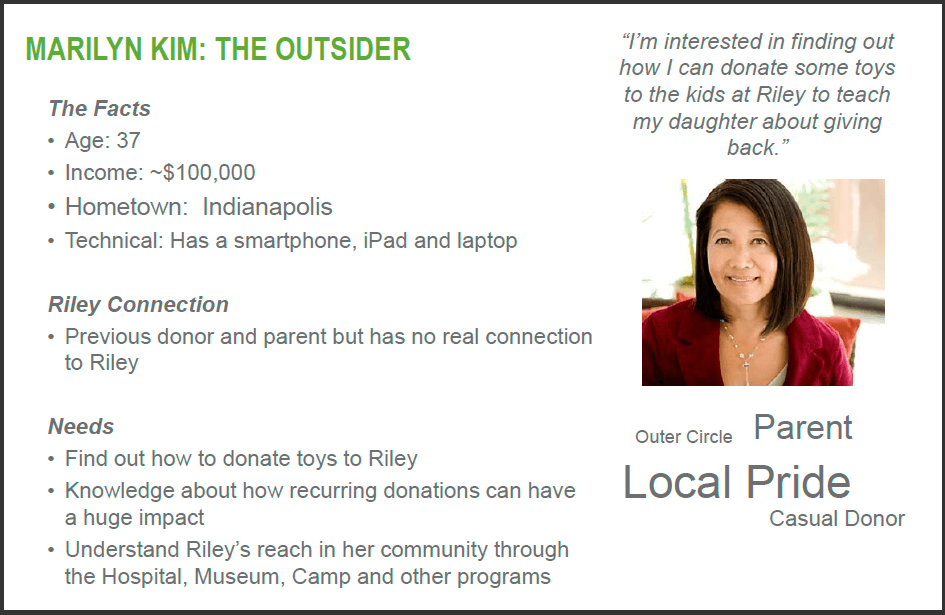
This is why persona research is so important.
It ensures you’re writing content that will attract and retain your audience’s attention.
The more time a visitor spends on your site, the more opportunities you have to rank in searches.
This may seem like simple advice, and I would agree with you.
But, 79% of consumers feel brands deliver irrelevant information, thus missing out on growth potential.
Related Article: 39 Content Marketing Trends You Need To Know (Infographic)
2. What is useful content?
A friend of mine recently received a golden retriever from the wonderful people at the Warrior Canine Connection (WCC).
The organization’s generosity and impact create evangelism marketing to their cause.
Sometimes they even go viral. That’s Murphy below. He’s nothing short of awesome for a golden.
As a result, these viral facebook posts are directly impacting awareness to their mission and revenue.
WCC ran an online donation campaign around the time of this Facebook post, which raised over $80,000, crushing their $70,000 goal.
It would be a stretch to prove a link between the post and exceeding donation goals without tracking analytics. However, it’s difficult to imagine it didn’t impact results, given the post reached tens of thousands of people.
While there is no silver bullet to writing a viral post, it does not prevent your nonprofit from gaining equal exposure through useful content.
But, what is useful content?
In the case of WCC, it was personalized, showcasing how impactful their organization is to those they serve.
Remember, though, content also needs to go into detail in order to provide usefulness to readers.
One of the best ways to both personalize your content and dive into detail is through case studies.
Not only do you get an opportunity to show how your organization impacts the world, but you’re also creating content that your members will enjoy.
Anatomy of a Winning Case Study:
- Showcase results first – Be very specific with your results and include any statistics or numbers. This will attract reader’s attention by making them question the steps you took to get those results.
- Identify key problems faced – This could be budgetary constraints, logistics concerns, or lack of volunteers. Overcoming problems prove competency in your abilities.
- Explain the solution step by step – Showcase every little thing you’ve done to get your results. People want to read actionable content, not theory.
- Include video testimonial – If possible, record a video testimonial to supplement your case study. This provides additional ways for your audience to consume content.
- Link to related case studies – By linking to related case studies, you can retain audience attention and increase the odds of them taking action (donating, volunteering, or becoming a member).
You can also use a free design tool like Canva for nonprofits to create visually compelling case studies on a budget.
Try following the step by step process above to create unique and useful content for your members.
3. Write for reader comprehension
Are you a fan of Jane Austen, Ernest Hemingway, or J.K. Rowling?
Would you be surprised to learn each of them wrote at an 8th-grade reading level?
Their work may not be intended for an 8th grader. But, they were writing for reader comprehension.
Think about it this way.
Would you rather have to decipher meaning from text? Or, have a clear understanding of an article at a glance?
The point is – keep your sentences short and scannable.
This will make it easy for visitors to comprehend and retain key points.
The Hemingway App is a free tool you can use to monitor and improve the readability of your content.
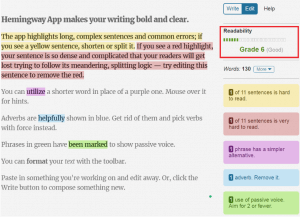
The platform analyzes your writing sentence by sentence, judging it based on how easily the material can be understood.
A good rule of thumb is to keep sentences between a 3rd and 8th-grade reading level.
This ensures your audience can easily follow and relate to the key points of your article. Who needs an 8 syllable word when 1 would convey the point just as well?
In addition to the Hemingway App, consider using a formal editorial process in your content strategy.
By incorporating an editorial process you drastically improve the quality of your work. Whether it’s in the form of clearing grammatical errors, or improving the structure and flow of your content.
Surprisingly, only a small minority of bloggers (15%) use a formal editorial process.
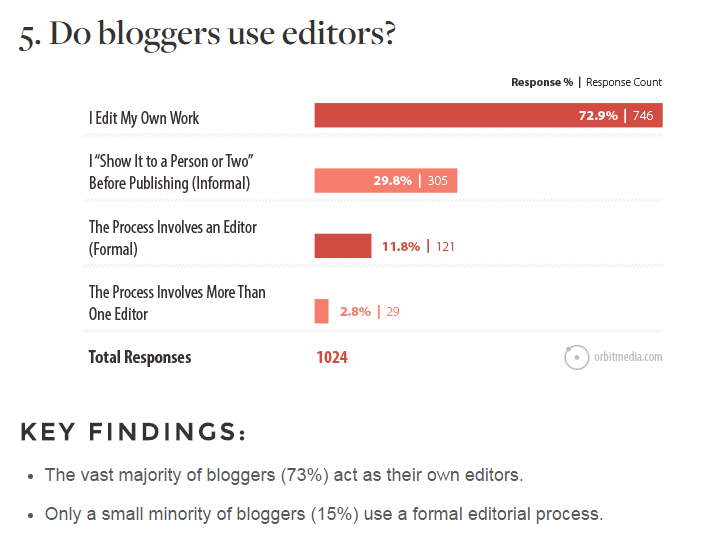
You can hire inexpensive freelance editors from Upwork, if you don’t have an editor on staff. The rating and review systems on the platform help to filter out quality candidates.
If budgetary restrictions are an issue, I’ve found the free Chrome extension Grammarly, in conjunction with the Hemingway App to be very effective.
In the end, the higher the quality, the greater incentive your audience has to come back to your site.
4. Optimize for on page search engine optimization (SEO)
Publishing a post without taking search engine optimization (SEO) into account can make exposure to your article seemingly impossible.
If search engines cannot understand the value of your posts or their intentions, then they’ll never rank in search results.
Luckily, optimizing your site isn’t as time-consuming of a task as one might think.
Within 5 minutes, you can turn an unoptimized article or page into a source of immense value.
But, why is SEO so important for marketing a nonprofit organization?
Well, 75% of users never scroll past the first page of search results.
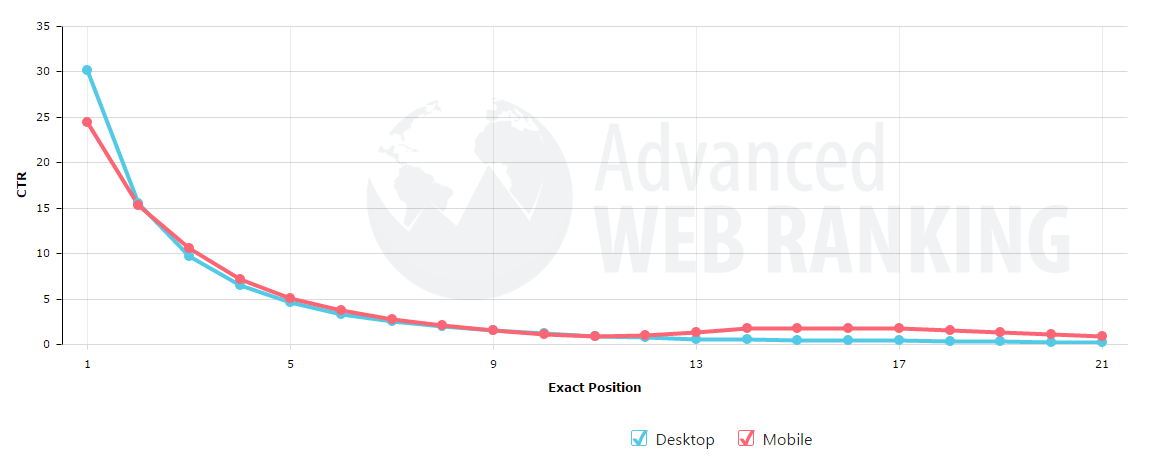
And, according to Advanced Web Ranking, the position of an organic search dramatically impacts click-through-rates.
First position results typically receive 30%-25% of clicks, second receive 15%, and third around 10%.
This means if your website isn’t appearing on the first page and in the top positions, you’ll lose thousands of organic visits to your site each month.
Now that you understand its importance, there’s just one more step before you begin optimizing your site.
You’ll need to conduct keyword research.
However, instead of worrying about identifying keywords you should be ranking for, it’s best to first understand the areas of opportunity that currently exist.
Google Search Console (formally webmaster tools) and Google Analytics are free, and powerful tools in marketing a nonprofit organization.
If you haven’t done so, I highly recommend you read the following:
- How to set up Google search console
- How to set up Google analytics
These tools will help to better understand the search analytics of your site, including demographics, location, and behaviors.
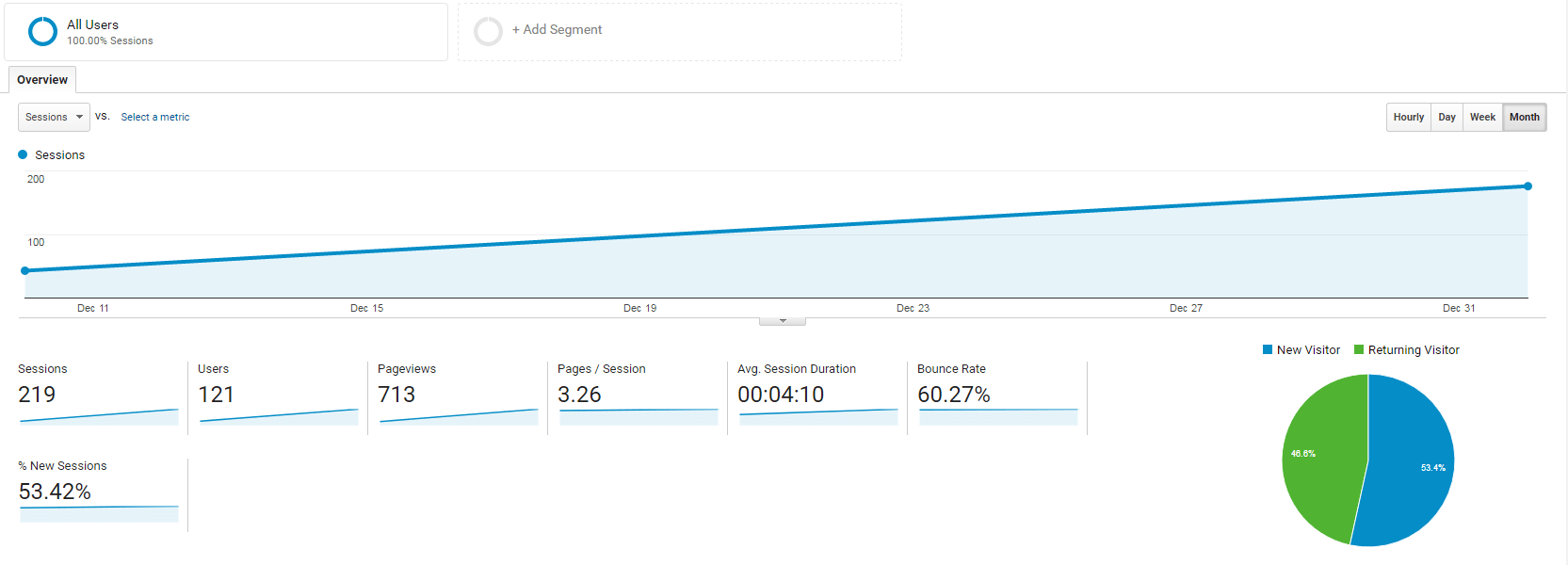
In other words, these tools provide a vast amount of data on how people interact with your site. This information can then be used to generate higher rankings and eventually more traffic to your site.
What’s most interesting, with regard to keyword research, is when you connect your search console with Google analytics.
By navigating to the search traffic tab within your console, and then clicking on search analytics, you can view a list of the words your site ranks for.
Make sure to check the impressions, CTR, and position boxes to view in detail how people respond to your keywords.

Armed with this information, you can evaluate keywords that present an area of opportunity.
For example, nonprofit marketing blog ranks on the first page of Google, after making minor SEO tweaks to the page.
In addition, the “Pages” filter tab will show the most visited pages on your site or uncover areas of opportunity for underperforming pages.
Once you’ve identified a keyword opportunity, it’s time to optimize a page or post.
Here are the 6 places you should include your keyword:
- Page Title
- Body
- URL
- H1 tag
- Alt image tag
- Meta description
That’s it. You can use free SEO plugins like Yoast or Squirrly to help quickly keep your posts optimized.
You should also consider using Latent Semantic Indexing (LSI) or related keywords. Overuse of anyone keyword on a page will lead Google to believe it’s spammy in nature, and penalize your site in search rankings.
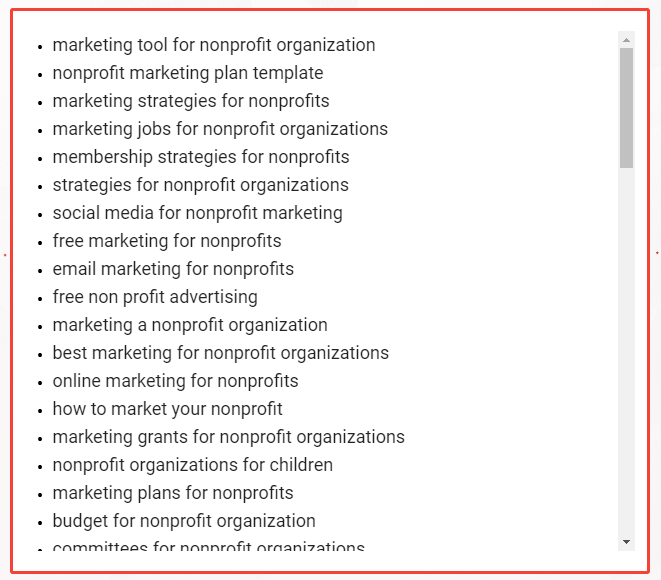
Related keywords are important because overuse of any one keyword on a page will lead Google to believe it’s spammy in nature.
Thus, your site will be penalized and your traffic will decrease.
For example, I wouldn’t over optimize this article by using marketing for nonprofits in every sentence.
Instead, I would use related words like nonprofit marketing, or marketing a nonprofit organization.
There are dozens of free tools available to identify related search phrases. However, one of my favorite free tools to use is
However, one of my favorite free tools to use is LSIgraph
5. Spend more time promoting content
Congratulations!
You’ve taken the time to write a unique piece of content that is optimized for search engines.
There’s just one problem.
No one is reading your work.
Following all the best practices just isn’t enough.
You need to position your content in front of your audience.
But, how do you do that?
If you want real measurable results in the form of increased reach and exposure you need to spend more time promoting your content.
A single Tweet or Facebook post won’t go far even if you have a significant social following.

In fact, 50% of retweets occur within the first 18 minutes.
For Facebook, 75% of your engagement will occur within 5 hours.
This means you need to take digital promotion a step further if you want sustainable growth.
In the case of Warrior Canine Connection, they may be interested in promoting a post related to the health benefits of owning a dog.
By using a tool like Buzzsumo, you can identify who has shared, liked, commented, or linked back to a given topic.
Searching for the phrase,”Health Benefits of Owning a Dog”, yields the following results:
From here, you can click on the view shares button to see exactly who shared these articles in the past.
If you notice an article has a ton of twitter shares, you can copy the URL and enter it into search.twitter.com.
This will provide a list of everyone who has shared your article on Twitter.
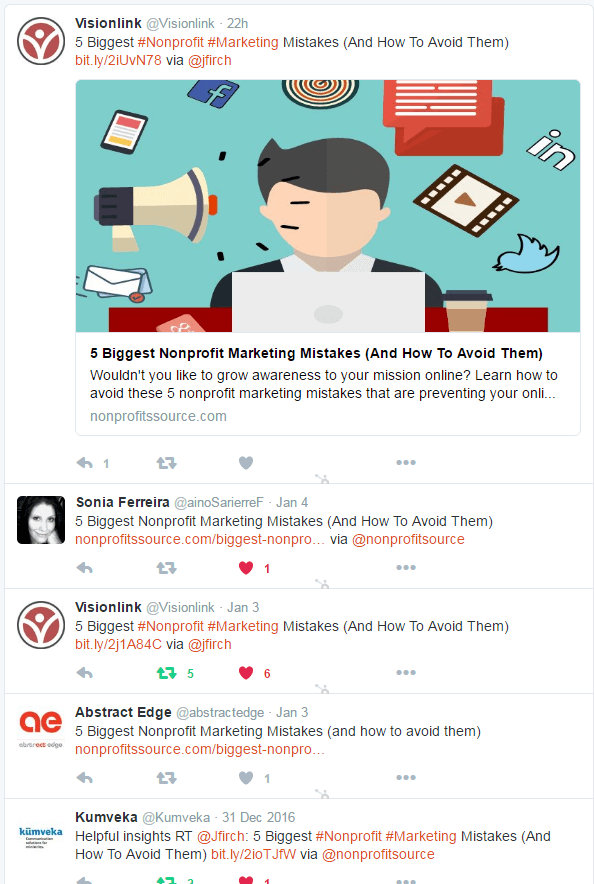
Now that you’ve identified who has shared an article related to your topic, the next step is to reach out to them.
I’ve found this script to work best for me:
“Hi [Name],
I noticed you shared [Article Name] on [Facebook/Twitter/LinkedIn] and thought you might enjoy [Name of Your Article].
We covered similar topics but added 3 main points that the other article missed.
Let me know if you’d like me to share it with you!
Thanks,
Jason”
This leaves your offer open-ended, while not sounding too pushy.
If you receive a response, provide a direct link to the article. Just be sure you ask to have your article shared within the person’s network.



This exercise recently worked for me, receiving a number of shares on Twitter, while exposing my site to a new audience.
6. Promote content with Facebook ads
Facebook advertising for nonprofits is almost too good to be true.
Especially if your nonprofit has a small marketing budget.
With the right advertising filters, you can position your articles in front of your intended audience.
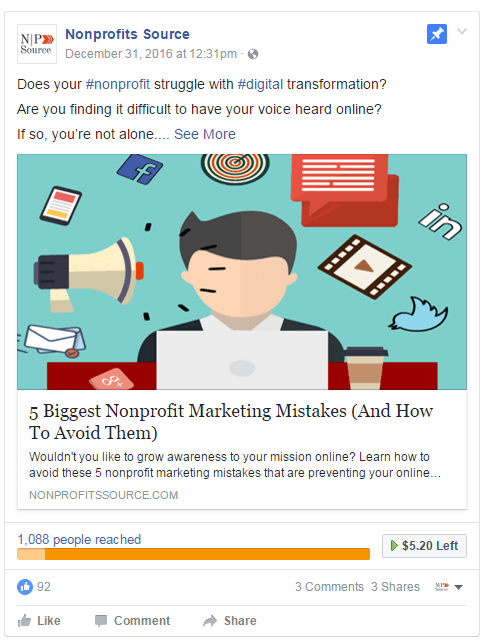
Don’t worry about having to convince nonprofit leaders. You can launch a successful campagin for under $25.00. Here’s how:
I boosted a Facebook post for one of my articles specifically targeting people interested in marketing for nonprofits.
The campaign began on December 31, 2016, and ended on January 7, 2017. This allowed me to collect about a week’s worth of data.
Since the budget was capped at $25.00, I only spent $3.60 per day.
I recommend starting with a smaller budget so you can a/b test ad variations that perform best.
You can increase your spending once you’ve identified the optimized ad copy that receives the most social engagements.
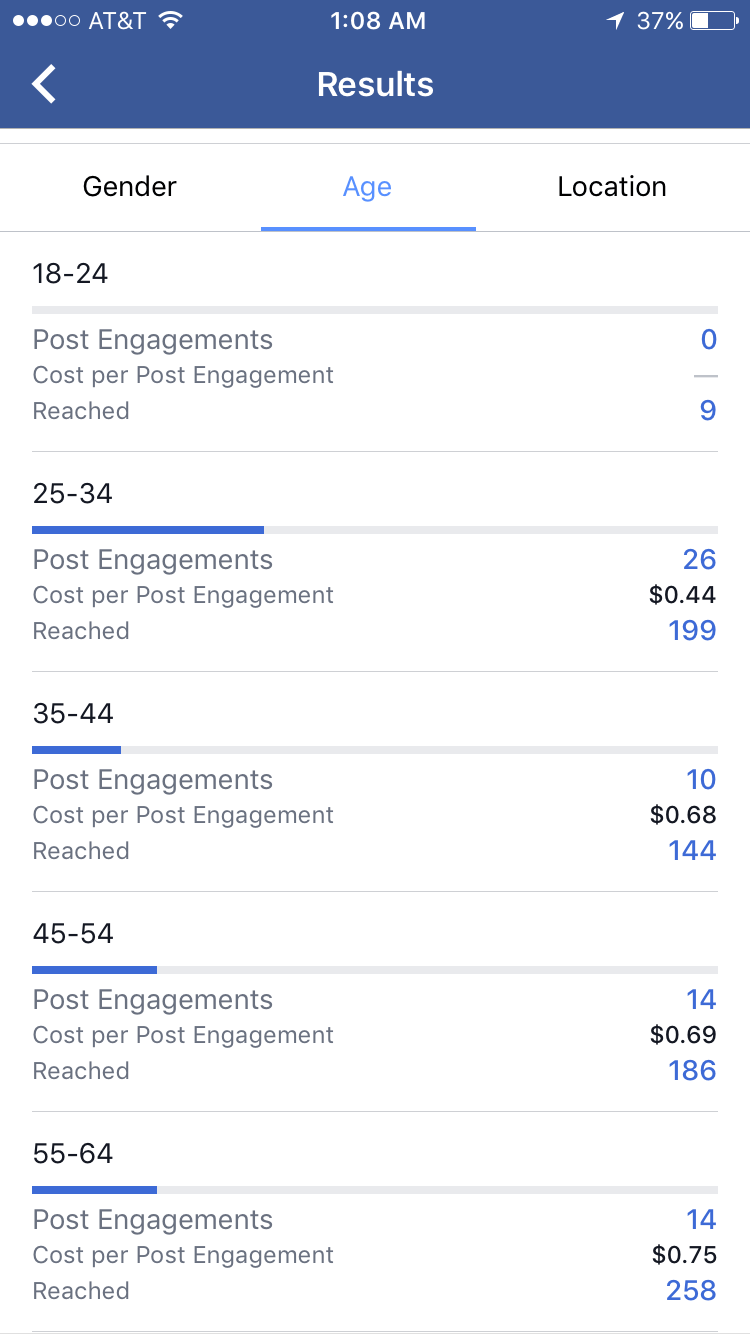
After running the ad for 1 week, I noticed a trend in user engagement.
I was spending almost double to reach groups aged 55-64, yet the ad was 46% less effective in gaining engagements.
With this data, I can retarget my ad to reach only people aged 25-34 who are interested in nonprofit marketing.
This ensures my ad spending is reaching the right audience, and that I am getting the most engagements on my article.

Sign Up For Free Marketing Tips
Do you use digital to grow awareness to your mission? Sign up and get the latest posts on digital marketing for nonprofits.
The best part about advertising on Facebook is that you’re rewarded you for having a high engagement to impression ratio.
The higher this ratio is the lower cost per engagement your ad will be. Facebook does this to reward advertisers for presenting relevant ads to their users.
Advertising your nonprofit on Facebook is certainly worth investing at least $25.00 to see the results.
When compared to platforms like LinkedIn or Google, you face higher costs and more competition.
7. Build links to tour content
I’ve sat through at least a dozen marketing sessions at ASAE’s annual meeting and heard the same phrase repeated.
Content is king. And it’s true.
Content is one of three core factors search engines use to rank sites. However, publishing content isn’t enough.
According to Google, if you want your site to rank highly in search results you need to focus on content and backlinks.
Search engines began evaluating backlinks in search algorithms as a way to assign authority to sites.
Links to your site from highly authoritative sites would result in that authority being shared with yours.
Sites are judged based on their domain authority, which is set on a scale of 0 to 100.
The higher the number the more authority a site has, thus the more power the link provides.
For example, if you write a piece of content and it’s linked to by the Center for Association Leadership (ASAE), then your site will benefit from a highly authoritative backlink.

In theory, and in practice, the higher the domain authority the higher a site will rank in search results when compared to other sites.
Just as with promoting your content online, you should also incorporate link building strategies if you want to gain meaningful traffic to your site.
8. Don’t worry about post frequency
Huffington Post publishes between 1,600 to 2,000 articles per day.
This isn’t to say your organization should also be publishing content more frequently.
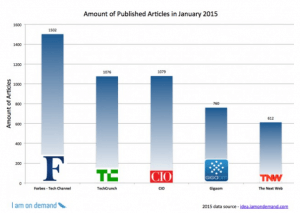
Major online publishers like Forbes, TechCrunch, and Huffington Post rely on generating as much content as possible in hopes one of them goes viral.
These publishers also have a vast online distribution network and an incredible followership.
For these publishers, it makes sense.
But, the truth is, no one cares how frequently or consistently you publish content.
Furthermore, the frequency of posts will not guarantee your content will rank in search results.
Instead, a combination of social shares, links to your page, comments, and visitor behavior will influence rankings.
And how do you get these?
By focusing on creating high-quality content that your audience will enjoy.
Conclusion
Marketing for nonprofits can be challenging. This is especially true if your goal is to reach your audience with content.
However, by focusing tailoring content for search engines, you can drive an immense amount of traffic to your site.
This traffic can then be used to create action from visitors.
Whether it be donating, volunteering, or spreading awareness to your cause.
By making small adjustments to your content marketing strategy, you too can rank on the first page of Google for the most competitive keywords.
What are your thoughts? Tell us what you liked most about this post in the comments section below!

Sign Up For Free Marketing Tips
Do you use digital to grow awareness to your mission? Sign up and get the latest posts on digital marketing for nonprofits.


